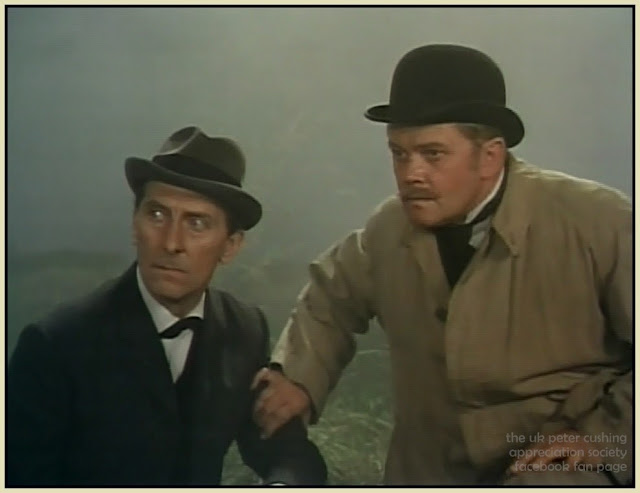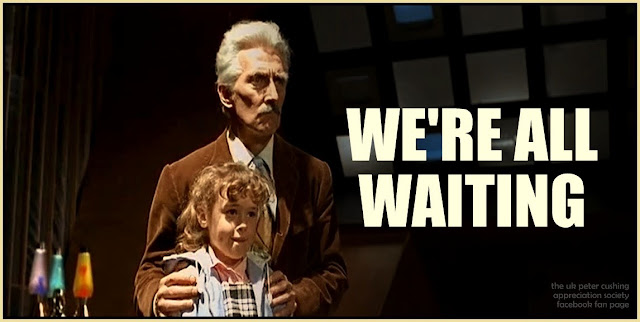When a number of young people go missing on a sleepy Greek island, Father Roache (Donald Pleasence) fears that the devil is at work…
The horror genre was in a state of flux in the late 1970s. Hollywood
had proved it possible to make quality genre films on a big budget with
the likes of Rosemary’s Baby (1968) and The Exorcist (1973), while
independent filmmakers like George A. Romero (Night of the Living Dead,
1968) and Tobe Hooper (The Texas Chain Saw Massacre) demonstrated that
talent and ingenuity could make up for a lack of resources, and in the
process helped to drag the genre away from the gothic into something
much more immediate and “in your face.” Budget conscious
producers around the globe attempted to keep abreast of the changes in
audience tastes, and many of the actors associated with the more “old
fashioned” thrills of yesteryear found it necessary to branch out in
search of steady employment. With the virtual demise of
Hammer and Amicus looming during this time frame, Peter Cushing – who
had spent the bulk of his career working in his beloved England – was
occasionally obliged to accept work on minor films shot in comparatively
“exotic” locales. The Devil’s Men (aka, Land of the Minotaur) was one such assignment.
The film was produced in Greece under the auspices of producer Frixos Constantine. Constantine
had some hopes of turning Greece into a new “player” in the
international filmmaking scene, but his hopes would, for all intents and
purposes, go unfulfilled. Looking at The Devil’s Men, it’s easy to see why. Constantine
was on the right track when it came to importing Donald Pleasence and
Peter Cushing to give the film some name value, but his selection of the
screenplay and the director proved far less inspired. The
end result was met with resounding indifference in most quarters, and
Constantine’s career as an independent producer came to an ignominious
end. He
would later have a hand in Michael Powell’s swansong, Return to the
Edge of the World (1978), but his credits since then have been limited
to short subjects of an educational bent.
The story is as hackneyed as it is predictable. A bunch of obnoxious horny teens go missing. A
concerned priest calls in a pal-turned-New York-flatfoot to help
investigate, since the local authorities are incompetent and
unconcerned. The pal is concerned, but not terribly
competent – he spends a good deal of time wanting to get information out
of a local woman, for reasons that are never made terribly clear, and
basically exercises bad judgment at every turn. Ultimately,
it is revealed that an exiled nobleman (Peter Cushing at his most
chilly) appears to be the mastermind behind the plot.
In many respects, The Devil’s Men is an amateurish mess. And yet, for some reason, it has a certain wonky charm. Despite
the best attempts of director Costa Carayiannis, whose basic MO appears
to be to lock down the camera and zoom in and out a great deal, there’s
some atmospheric sequences. The Greek locales are photogenic. Brian Eno contributes an eerie score. And the climax gives the ending of Robert Fuest’s The Devil’s Rain (1975) a run in terms of sheer lunacy.
There’s also the performances of Pleasence and Cushing to consider. Neither
actor really gives one of their more memorable performances here, but
they look very good indeed compared to the likes of Costa Skouras, whose
New York cop emerges as one of the most obnoxious clowns ever to
“grace” a horror film. Pleasence looks properly bemused, while Cushing turns off his usual grandfatherly charm to play a downright nasty villain. The
script doesn’t give him a great deal to do, but Cushing seizes the few
opportunities that come his way, and the film certainly springs to life
during his too-few appearances.
It will never be mistaken for great (or even
good) art, but The Devil’s Men is still worth a look for its various
positive attributes; fans of Cushing will also be interested to see him
playing a completely unsympathetic role for once, while Pleasence gets
to rehearse his later appearance in John Carpenter’s vastly superior
Prince of Darkness (1987).
fEATURE: TROY HOWARTH
IMAGES: MARCUS BROOKS
fEATURE: TROY HOWARTH
IMAGES: MARCUS BROOKS
JOIN US AT OUR FACEBOOK FAN PAGE: UPDATED DAILY: HERE



























































